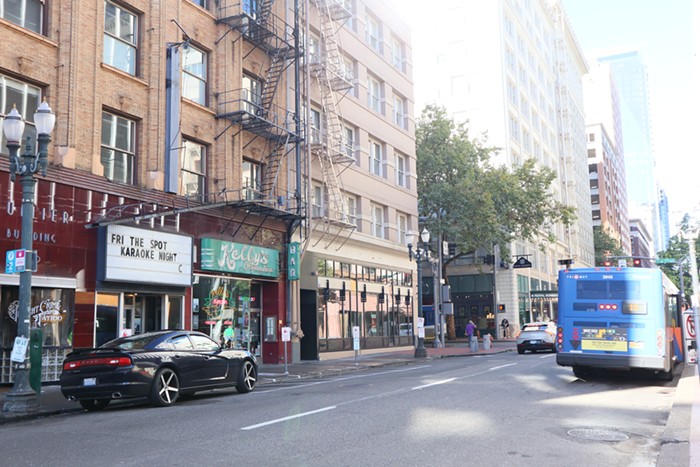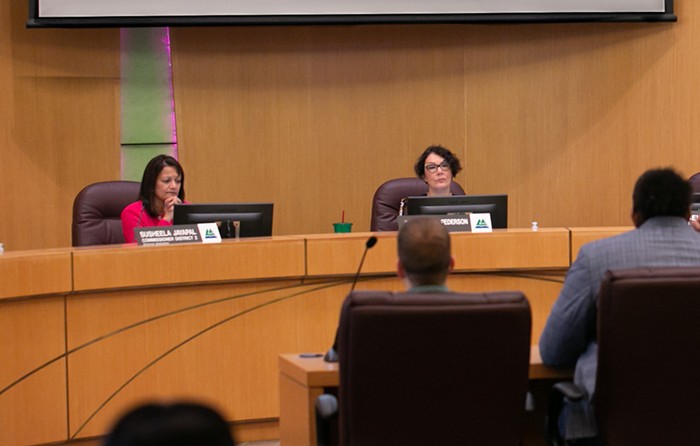
With Oregon hours away from lifting its indoor mask requirement, Oregon health leaders debuted the state’s new equity-focused COVID-19 recovery plan Friday. The plan, which the state calls Resilience in Support of Equity (RISE), aims to address systemic health inequities while maintaining a watchful eye on potential COVID surges.
“In this new phase, our goal is to strengthen health resilience in our communities, not just to tackle COVID-19, but also to address long standing health inequities and other challenges,” said Oregon Health Authority (OHA) Director Patrick Allen during a press conference Friday.
COVID cases in Oregon have declined 94 percent since the peak of the omicron variant in January, and COVID-related hospitalizations are expected to fall below 200 per day by the end of March. With fewer cases circulating in the community and hospital capacity no longer strained, Oregon will lift its COVID mask requirements at midnight Friday and instead allow businesses, public services, and individuals to make their own safety decisions. Masks will still be required on public transportation until April 18 due to federal regulations.
State health officials said that Oregonians are better protected against the virus than they were in June 2021, the last time Governor Kate Brown decided to lift the state’s COVID precautions—mere weeks before the delta variant rapidly spread throughout the state. Over 80 percent of the state’s population is estimated to have immunity against the virus, either from vaccination or infection. OHA has not detected any concerning variants on the horizon.
However, COVID remains a threat.
“Like a wildfire that has been contained but not fully extinguished, the COVID-19 pandemic still poses risks to many of us,” the RISE plan reads. “Like a wildfire, the pandemic has left a stark and smoldering aftermath for communities trying to recover.”
The plan outlines five goals to support community recovery: Continue to protect communities hit hardest by COVID, prioritize individuals most vulnerable to COVID, expand health coverage, keep schools open, and “restore social cohesion.”
In practice, that means partnering with over 175 community-based health clinics to provide COVID-related health services to vulnerable communities, maintaining capacity to administer 25,000 vaccines every day, helping Oregonians who received emergency federal healthcare transition to the Oregon Health Plan, and continuing to monitor new variants by testing at least 5 percent of positive COVID tests in the state. OHA will continue to meet with communities that have historically had less access to public health services—most notably Oregonians of color—and develop specific, community-informed plans to address health disparities made more obvious by the pandemic.
This new phase of COVID response will also continue to rely heavily on vaccines, but ultimately emphasize each Oregonian’s personal safety choices and delegate COVID safety decisions to county health authorities. As of March 1, 67 percent of Oregon’s total population had been fully vaccinated and 58 percent of eligible adults had received a booster shot. If OHA’s testing reveals a future COVID variant that could threaten the state’s hospital system like delta or omicron, Allen said OHA would likely reinstate statewide health precautions.
Despite Oregon’s encouraging decline in cases, health officials stressed that COVID is not yet an endemic like the flu because the virus still has a level of severity and unpredictability.
“It's important to understand that the pandemic is not yet over,” said state epidemiologist Dean Sidelinger. “We will continue to see new cases of disease and we fully expect new variants to emerge, but we believe the firewall of immunity we currently have will keep the virus at bay.”
State health officials acknowledged that while removing the indoor mask mandate is an exciting change for some, it may cause more anxiety for immunocompromised people and Oregonians who have a higher risk of catching COVID and developing severe symptoms.
“For some people, wearing a mask may provide an added sense of security and that is totally fine,” Sidelinger said. “My hope is that it becomes an unremarkable occurrence here in Oregon. Just as someone who chooses to wear a jacket or carry an umbrella on a rainy day, they may choose to wear masks during flu season.”
Oregon’s indoor mask requirement expires at 11:59 pm Friday.



















